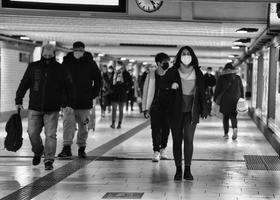The world of education in the United States is in a constant state of flux. Year after year, educational reform and new policies are passed that change the face of American education. As such, it is important to consider the educational background of the people who are representing the American public in approving or denying these policies and reforms.
We completed a survey of the 115th House of Representatives to gather insite of the U.S. House of Reformation about the educational background of its members. We also gathered information about the type of education each Representative chose for his or her children. The results of that survey are summarized below along with some interesting points and thought-provoking questions.
Background on the United States Congress
The United States Congress is made up of the Senate and the House of Representatives. Members of both are chosen through direct election, though it is possible for vacancies on the Senate to be filled via gubernatorial appointment. Congress is made up of a total of 535 voting members.
The Senate is comprised of 100 senators which are elected at large by their constituents for a six-year term. Two representatives are allocated to each state. The House of Representatives is comprised of 435 voting members as well as six non-voting members that represent Puerto Rico, the U.S. Virgin Islands, American Samoa, Guam, the Northern Mariana Islands, and Washington, D.C. Members of the House of Representatives serve two-year terms, each representing a single district.
Within the 115th House of Representatives, there are 239 Republicans including 1 Delegate from Puerto Rico. There are also 197 Democrats and 5 vacant seats. The 115th Senate is made up of 51 Republicans, 47 Democrats, and 2 Independents. The current Congress contains a record number of women – 88 in the House and 23 in the Senate. It is also worth noting that there are 48 African American members of the House and 3 in the Senate.
This video offers an overview of the National Cathedral School.
What Information Was Collected?
The survey conducted regarding the education of members of the 115th House of Representatives was similar to that conducted for the 115th Senate – see the results of that survey here. Every member of the house was contacted and asked the following three questions:
- Did house member X attend a public or private school for high school?
- Did house member X attend boarding school?
- Did house member X send his children to private or public school?
After gathering responses to the questions above, we reviewed the results and performed an in-depth analysis to determine relevant conclusions. Before getting into the details, however, it is important to note some differences between the two studies. For one thing, the data set for the House of Representatives is much larger, simply due to the larger number of members (436 vs 100). Second, answers were only collected from voting members and the representative from the District of Columbia.
This video offers an overview of Sidwell Friends School, one of Washington's private day schools.
What Were the Results?
Out of 436 members from the House of Representatives who were surveyed, 323 attended public high school, 93 attended private high school, 1 was homeschooled, and 19 declined to answer. When asked about the education they chose for their children, 234 members sent their children to public school and 68 sent them to private school. A total of 53 members sent their children to a mix of public and private schools while 62 were homeschooled and 19 declined to answer.
Given these statistics, some interesting points can be made:
- About 23% of all members of the House of Representatives attended private high school – the split is roughly even among Democrats (23.8%) and Republicans (21.1%).
- Just over 5% of all members of the House of Representatives attended boarding school.
- More members of the House of Representatives sent their children to private school or a mix of public and private school (34.1%) than attended private school themselves (22.3%).
1. About 23% of all members of the House of Representatives attended private high school – the split is roughly even among Democrats (23.8%) and Republicans (21.1%).
According to the Council for American Private Education, about 10% of all U.S. students attend private school. Given the statistics above, it would seem that members of the House of Representatives are overrepresented in this group. This may not come as much of a surprise considering the same was true for members of the Senate (nearly 25% attended private school).
Though the quality of education varies from one institution to another, there is a common belief that private schools offer a better education than public schools. Numerous factors come into play here, however, including the location of the school, the demographics of the student body, the amount of funding the school receives, and other factors. It is also important to remember that private schools charge tuition which limits the kind of students who attend them.
In comparing the net worth of the members of the 115th Senate who attended private school to the national average, we found that the wealthiest senator’s net worth (Mark Warner) was more than 5,000 times the 2012 national average for Americans aged 35 to 44 ($45,740) and 2,500 times the 2012 national average for American aged 45 to 54 ($100,404). According to Roll Call, Darrell Issa (a representative from California) has a net worth of $283.3 million – that’s nearly 6,200 times the average for Americans 35 to 44 and over 2,800 times the average for Americans 45 to 54.
To compare the net worth of Senators to members of the House of Representatives, consider the top 50 wealthiest members of the 115th Congress. Out of the top 50, only 14 were members of the Senate and the remaining 36 were from the House of Representatives. In order to make the list, members had a net worth of at least $7.5 million. The wealthiest member of the 115th Senate has a net worth of $90.2 million (Mark Warner) compared to Darrell Issa’s net worth of $283.3 million.
2. Just over 5% of all members of the House of Representatives attended boarding school.
There are roughly 300 boarding schools in the United States with a total of about 6,000 students – that’s roughly 0.001% of the American student population. If you consider that 5% of all members of the House of Representatives surveyed attended boarding school, you’ll see that it is a significant overrepresentation. If you do the math, you’ll find that the number of members of the House of Representatives who attended boarding school is 50 times the national average.
Why is this statistic significant? Again, there are several interesting points to be made here. First and foremost, boarding schools charge tuition which means that only a select number of students will be able to attend based on affordability. Second, the quality of boarding school education is often higher than in public schools because a higher percentage of teachers hold advanced degrees. Boarding schools offer a wide variety of other benefits as well including athletic programs, extracurricular activities, college preparatory services, and more.
3. More members of the House of Representatives sent their children to private school or a mix of public and private school (34.1%) than attended private school themselves (22.3%).
According to the results of the survey, 44 Democrat and 49 Republican members of the House of Representatives attended a private high school – that’s a total of 93 Representatives. When asked about the educational choices they made for their children, 68 Representatives chose private school and 53 chose a mix of private and public school – that’s a total of 121 Representatives and a 30% increase over the number of Representatives who attended private school themselves.
To delve a little deeper into this point, let’s take a look at the breakdown of Democrats versus Republicans. A total of 44 Democrats attended private school and 33 sent their children to private school. For Republicans, 49 attended private school themselves and 35 sent their children to private school. Out of the 53 students who attended a mix of private and public schools, 23 were from Democrat families and 30 were from Republican families. To give you some percentages, 34.1% of members of the House of Representatives sent their children to private school or a mix of public and private – 37.3% were Democrat and 31.7% were Republican.
When thinking about why the number of Democrats utilizing private schools for their children is higher than for Republicans, it’s worth considering that many Democrats in the House of Representatives come from large cities and other urban areas where the quality of public education may be lower. According to data from the U.S. Department of Education, the top public school districts in the nation are:
- Solon City School District (Solon, OH)
- Tredyffrin-Easttown School District (Wayne, PA)
- Radnor Township School District (Wayne, PA)
- School District of Clayton (Clayton, MO)
- Dublin City School District (Dublin, OH)
- South Texas Independent School District (Mercedes, TX)
- Eanes Independent School District (Austin, TX)
- Wellesley Public Schools (Wellesley, MA)
- Indian Hill Exempted Village School District (Cincinnati, OH)
- Lexington Public Schools (Lexington, MA)
As you may notice, none of these school districts is located in a particular urban area. According to an article published by USA Today, the states with the worst public school districts are Massachusetts, New Jersey, Vermont, New Hampshire, Connecticut, Maryland, Wyoming, Pennsylvania, New York, and Minnesota. Though more research is certainly warranted, it is telling that Representatives from the states with better public education are more likely to send their children to public school.
This video offers a glimpse of St. John's College School.
What Conclusions Can Be Drawn?
Though every person’s situation is unique, it is difficult to deny the theory that the quality of education a student receives has a significant impact on their future success. Not only does a quality education help you develop skills to cope with life and future employment, but simply being educated opens up innumerable opportunities. The quality of education a student receives will impact the number and quality of opportunities available to him which, as you can imagine, will significantly impact his future success in terms of a career.
Given the statistics discussed above, it should come as no surprise that a significant number of members from the House of Representatives chose to send their children to private school. Considering the fact that many of these members have a net worth that is hundreds or thousands of times higher than the national average adds further support to this theory. You must remember that every school district is different, and the quality of education is determined by numerous factors, but certain facts and statistics cannot be ignored.
Regardless of education, it is a member of the House of Representative’s job to represent the interests of his or her district. If you feel like your Representative isn’t doing so, don’t hesitate to contact his office and make your voice heard. You can find information about contacting your district Representative by visiting the website of the U.S. House of Representatives.
Questions? Contact us on Facebook. @publicschoolreview












